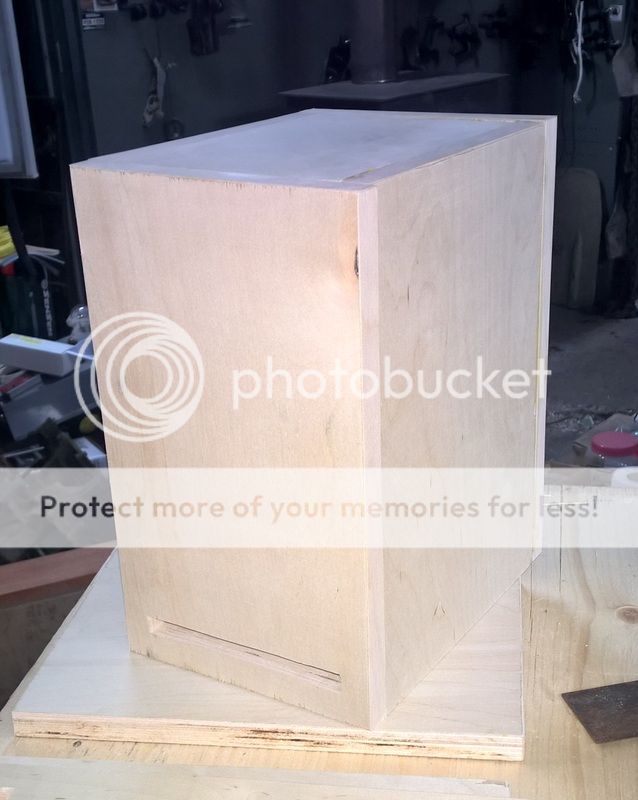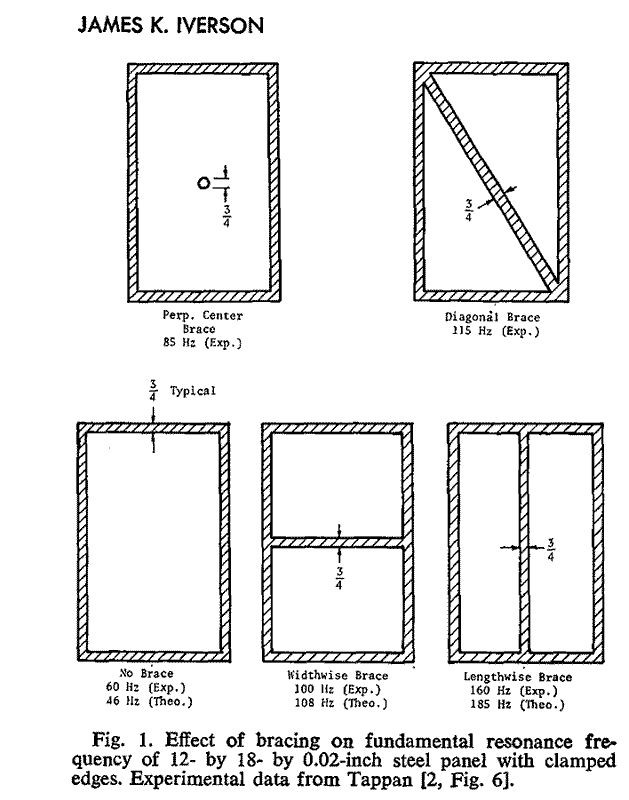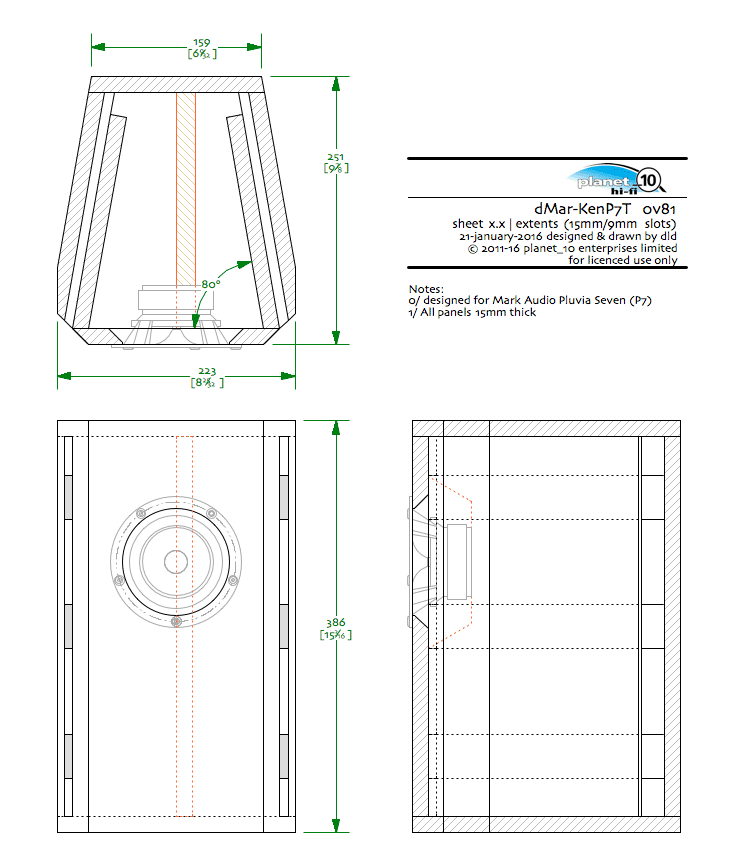I'm willing to donate a free sample. Do you still have all those other drivers you've used in your listening tests? I'd love to see measurements that make it easy to compare drivers on an objective level. This would require to measure all drivers under the same conditions. Would you be interested in doing something like this? I would do it myself but unfortunately I don't have the required space.
I have most of the drivers but not all of them. The major ones that were the winners certainly and many others including: 10F, B80, TG9, TC9, 3FE22r4, 3FE22r8, 3FE22r16, RS100-4, RS100P-4, PS95-8, FR88EX, P830986, Alpine Jeep, W2-852SH, A7.3, CHN-70, FF105WK, SB65WBAC25-4, FR58EX, P830983, etc. many of these actually reside in actively used speakers now. However they can be temporarily brought back to the test bench.
These have all been tested following a standard protocol as used in Rounds 3, 4, 5. I would redo another round of say 6 drivers total if you think a major change to the existing protocol is in order. Otherwise by following Round 4, we just build upon a database of sound clips and measurements that can be inter-compared.
PM me if you want to donate a driver for testing - thanks.
X
Last edited:
The brace will be more effective if you rotate it 90° (ie top to bottom). I'd run it from the back to the baffle and then at least a couple stubs that reach from it to the sides. Don't place them at the centre of the panel.
dave
Thanks for the feedback. Can you explain why rotating it 90' on the Y axis would be more effective? Admittedly, I simply mimicked the orientation of the supports in the Seos Alchemy 8 Towers that I just finished.
I have most of the drivers but not all of them. The major ones that were the winners certainly and many others including: 10F, B80, TG9, TC9, 3FE22r4, 3FE22r8, 3FE22r16, RS100-4, RS100P-4, PS95-8, FR88EX, P830986, Alpine Jeep, W2-852SH, A7.3, CHN-70, FF105WK, SB65WBAC25-4, FR58EX, P830983, etc. many of these actually reside in actively used speakers now. However they can be temporarily brought back to the test bench.
These have all been tested following a standard protocol as used in Rounds 3, 4, 5. I would redo another round of say 6 drivers total if you think a major change to the existing protocol is in order. Otherwise by following Round 4, we just build upon a database of sound clips and measurements that can be inter-compared.
PM me if you want to donate a driver for testing - thanks.
X
I wasn't thinking about a listening test but about measurements that show dispersion and distortion/max. SPL capabilities.
The idea would be to build a larger flat box that goes on the floor in which each driver can be mounted for measurements. Then measure at several angles using a measuring jig to ensure repeatablility and comparability. With appropriate windowing quasi-anechoic data could be derived.
For the second set of measurements each driver would be measured at increasing levels until compression sets in. Distortion data can be derived from these measurements.
I do the distortion tests already at varying levels typically 85dB, 90dB, 95dB is usually enough to make most drivers cry uncle distortion wise (unless they are in a tractrix).
I also do the polar dispersion measurements with driver in either a Dagger or Nautaloss spiral sealed TL with a trapezoidal baffle. These systems have very low coloration and backl reflection effects. I then take polars with the speakers sitting on a stand. I have done it manually with string, ruler, and protractor. A rotation jig would be convenient.
Have you read the threads for the Subjective Blind tests to see the measurements that accompany them? FR, IR, HD, but no polar.
I also do the polar dispersion measurements with driver in either a Dagger or Nautaloss spiral sealed TL with a trapezoidal baffle. These systems have very low coloration and backl reflection effects. I then take polars with the speakers sitting on a stand. I have done it manually with string, ruler, and protractor. A rotation jig would be convenient.
Have you read the threads for the Subjective Blind tests to see the measurements that accompany them? FR, IR, HD, but no polar.
Got started on the 7.5L reflex design this weekend. Parts weren't in yet but got one cabinet pretty far along and the other about half way. This was my first time using glue only, usually use bradnails. Turning out ok but a couple of my edges are not perfectly aligned. Room for improvement  Slot port needs some attention as well, it's just been handcut because I wanted to change it around to have the front baffle overlay the sides.
Slot port needs some attention as well, it's just been handcut because I wanted to change it around to have the front baffle overlay the sides.
(the front panel isn't glued yet, just sitting there)

(the front panel isn't glued yet, just sitting there)

Last edited:
Can you explain why rotating it 90' on the Y axis would be more effective?
Orienting the brace such that the resulting side panels have a higher aspect ratio than the braced panel ensures that you are pushing any potential resonances as high as possible. The higher they are the less likely they are to get excited, and in relative terms you have more wood to damp it if it does happen.
From an AES article:

dave
I do the distortion tests already at varying levels typically 85dB, 90dB, 95dB is usually enough to make most drivers cry uncle distortion wise (unless they are in a tractrix).
I also do the polar dispersion measurements with driver in either a Dagger or Nautaloss spiral sealed TL with a trapezoidal baffle. These systems have very low coloration and backl reflection effects. I then take polars with the speakers sitting on a stand. I have done it manually with string, ruler, and protractor. A rotation jig would be convenient.
Have you read the threads for the Subjective Blind tests to see the measurements that accompany them? FR, IR, HD, but no polar.
Hi X
Dispersion patterns are the main differentiator between most drivers as the frequency response can be easily equalized these days.
I would recommend NOT to measure the speakers in a box on a stand but in half space, i.e. mounted in the floor with a largish cavity behind it. A large and shallow box on the floor would probably be similar enough. That way you get repeatable and comparable results with minimized and delayed reflections.
Angular separation of off axis measurements needs to be rather small as the response of full range drivers can change quite dramatically within a small area. Not every driver is as well behaved as those little Tymphany ones.
They are, a nice looking small driver [visually at least from my very limited experience] .
Building an enclosure without a nailing gun is hard for me to line up with clamps alone . I like to use my brad nailer , counter sink the nails, use a wood filler to cap the nails. Then finish to suit.
Building an enclosure without a nailing gun is hard for me to line up with clamps alone . I like to use my brad nailer , counter sink the nails, use a wood filler to cap the nails. Then finish to suit.
Orienting the brace such that the resulting side panels have a higher aspect ratio than the braced panel ensures that you are pushing any potential resonances as high as possible. The higher they are the less likely they are to get excited, and in relative terms you have more wood to damp it if it does happen.
From an AES article:

dave
I really appreciate all the info/answers you've provided. I've already cut the panels for this build, but will model and cut a vertical support on the next iteration.
Is any sort of roundover treatment necessary on the slot edges on the baffle? Or is light sanding to soften the corners adequate?
Is any sort of roundover treatment necessary on the slot edges on the baffle? Or is light sanding to soften the corners adequate?
I always say the more the better. It is bound by aesthetics and what is practical. Bevel or roundover. As it gets bigger its effect moves to cover lower in frequency.
dave
I've been procrastinating. It wouldn't take long to get some stuff done if motivated 
Will be an extension to the CHR/CHP/CHN series. Versions of the same enclosures as already there, but tuned for the P7. Also a series of larger ones, same as the original FonkenPrime. That would include a compact floorstander.
dave
Will be an extension to the CHR/CHP/CHN series. Versions of the same enclosures as already there, but tuned for the P7. Also a series of larger ones, same as the original FonkenPrime. That would include a compact floorstander.
dave
I know it's been a short time since the Pluvia 7 release, but do you have Mini Onken dwgs. ready yet ?
Teaser

dave
PS: I am doing a number of other variations, they are over here: http://www.diyaudio.com/forums/planet-10-hifi/286025-mark-audio-pluvia-seven-mar-ken-sketches.html
- Status
- This old topic is closed. If you want to reopen this topic, contact a moderator using the "Report Post" button.
- Home
- Loudspeakers
- Full Range
- New Mark Audio Pluvia Seven
